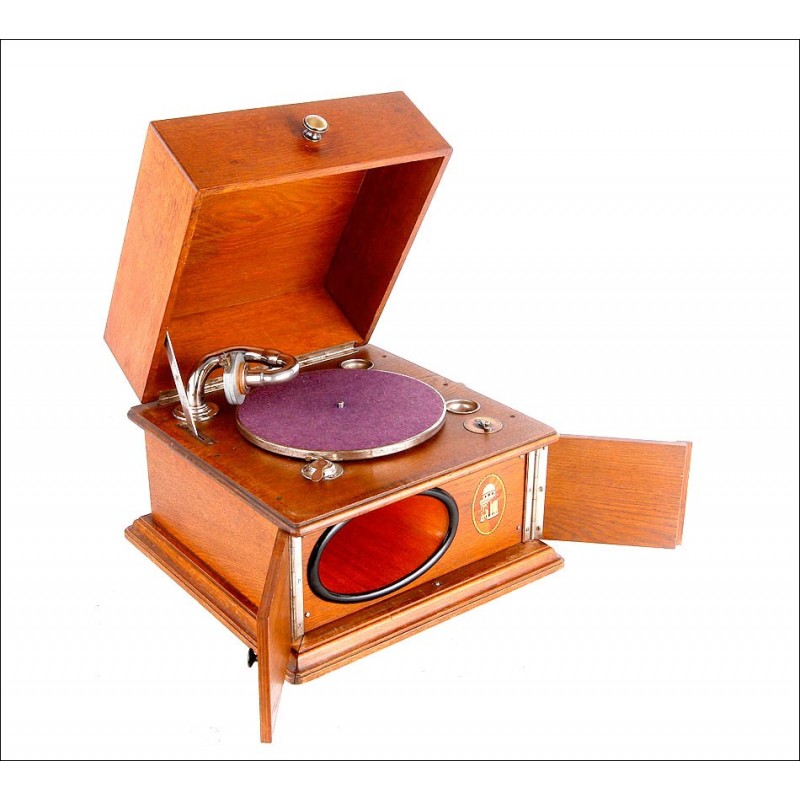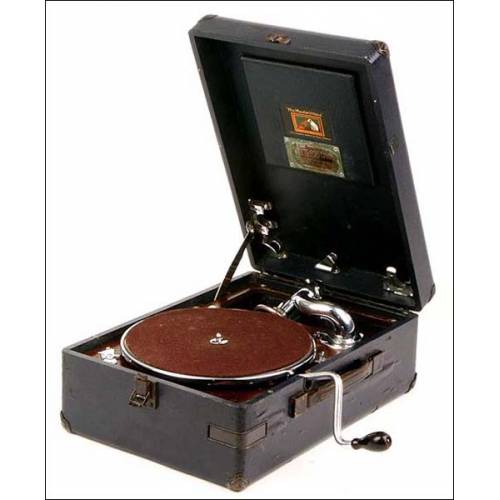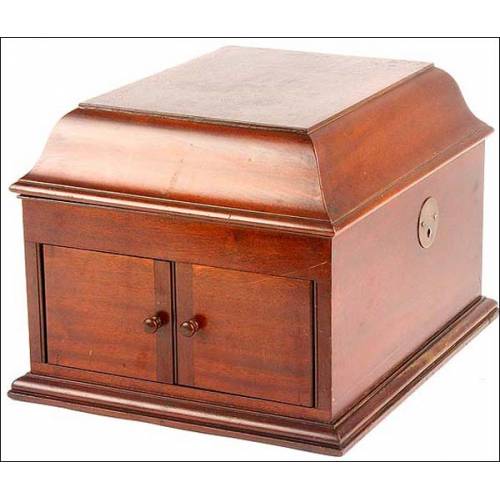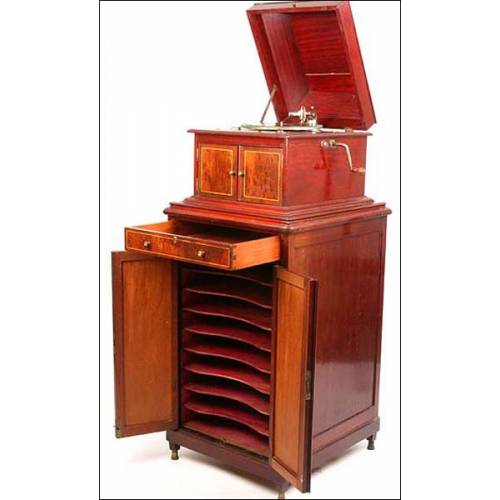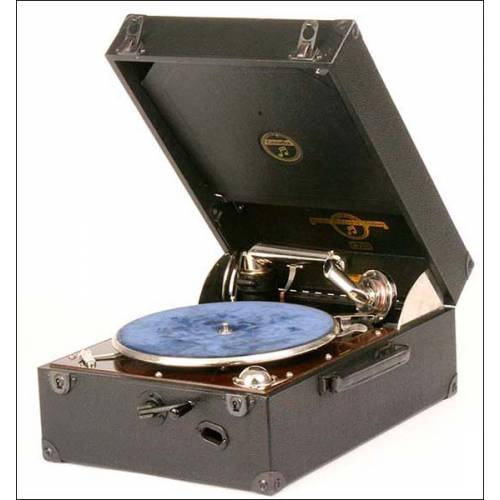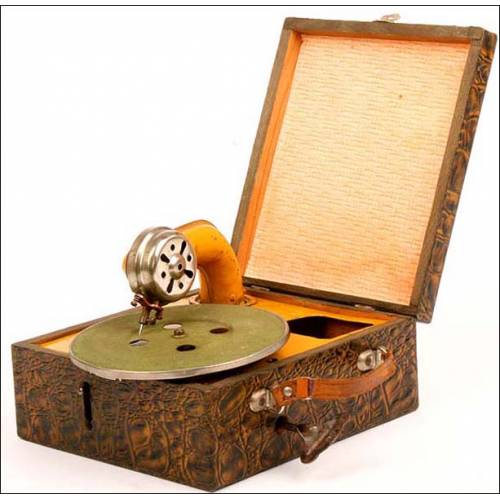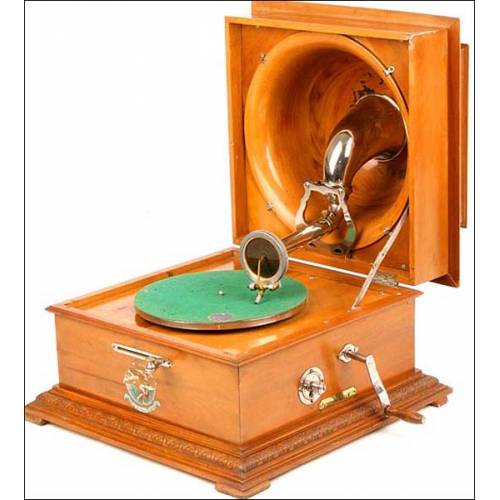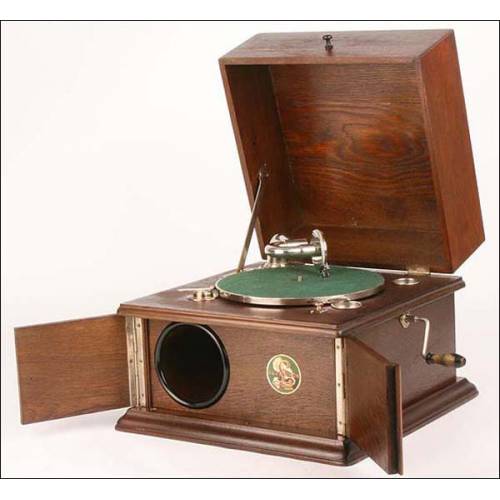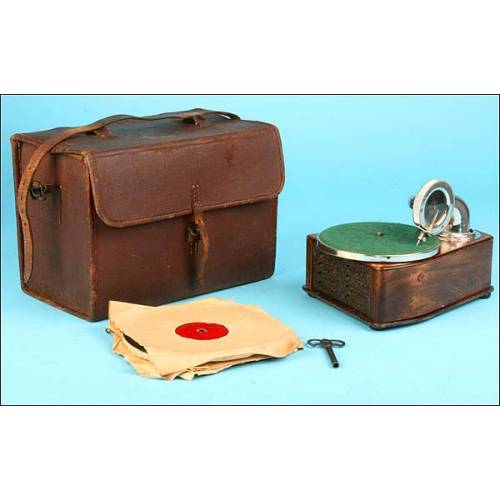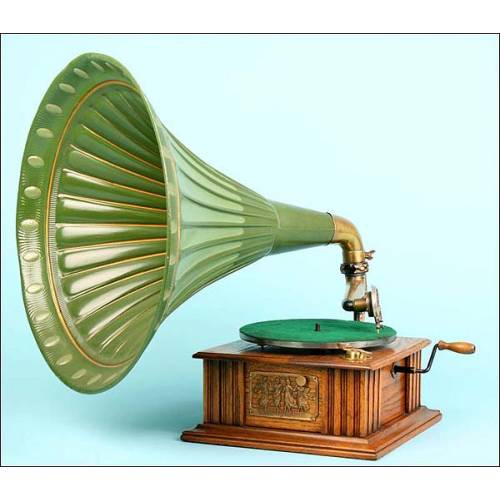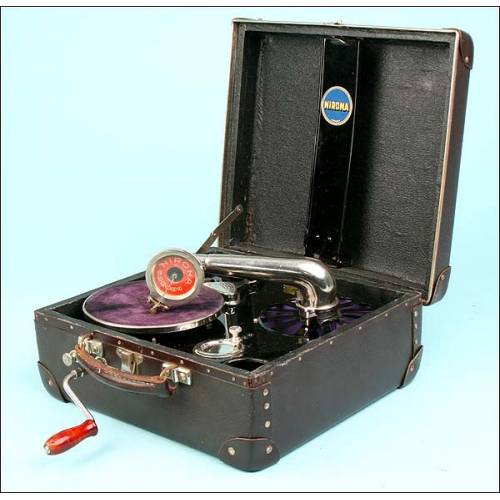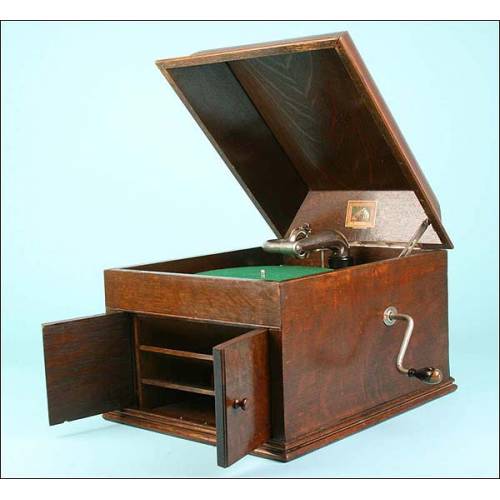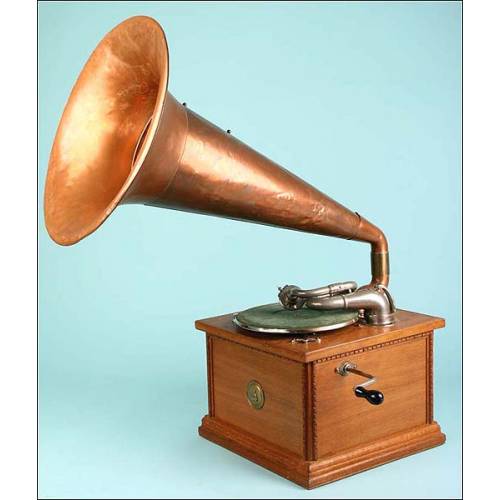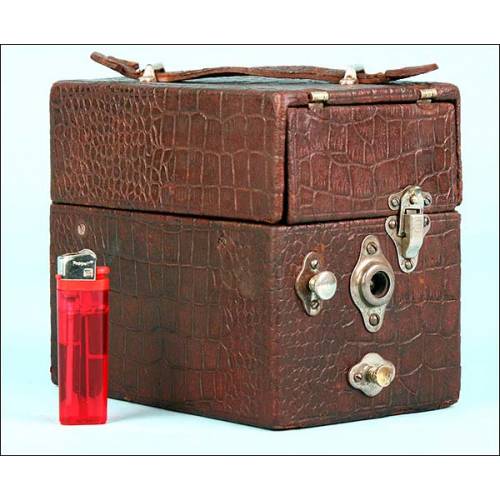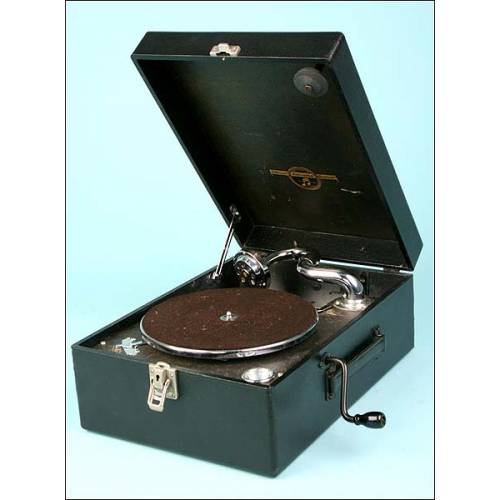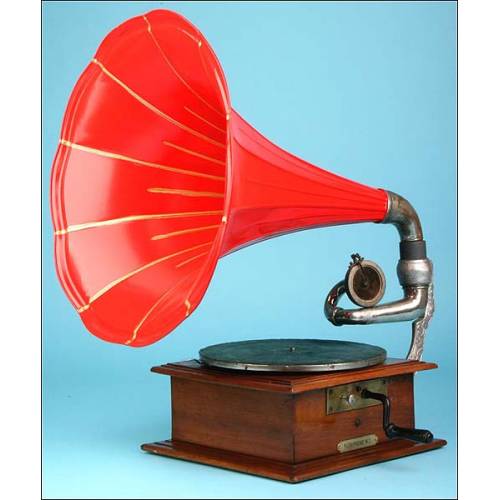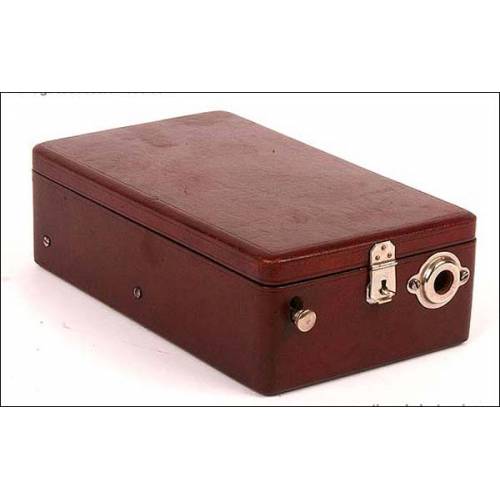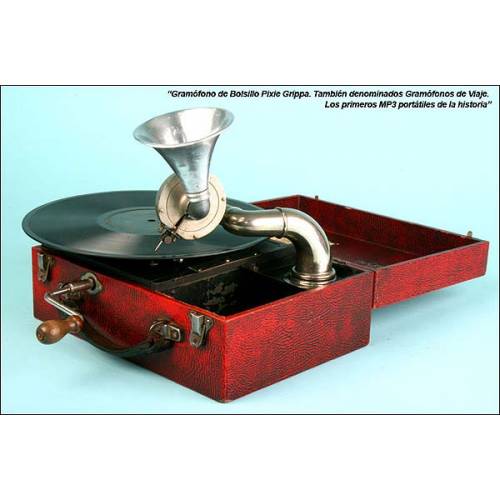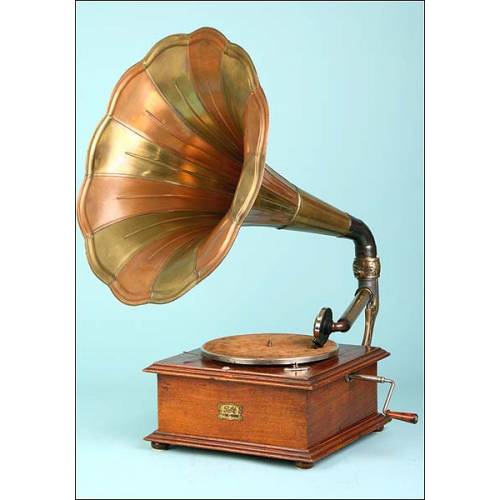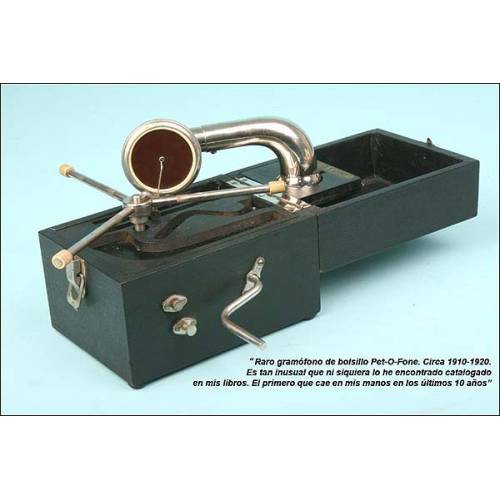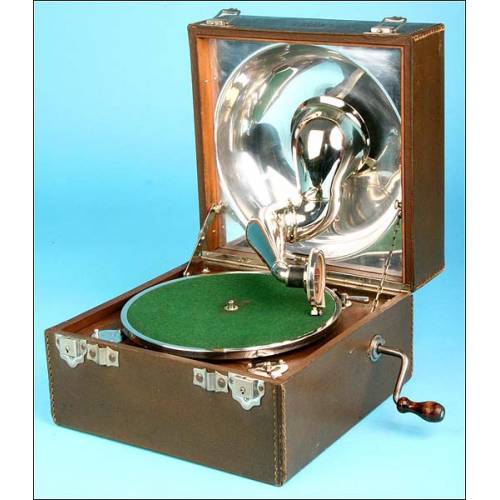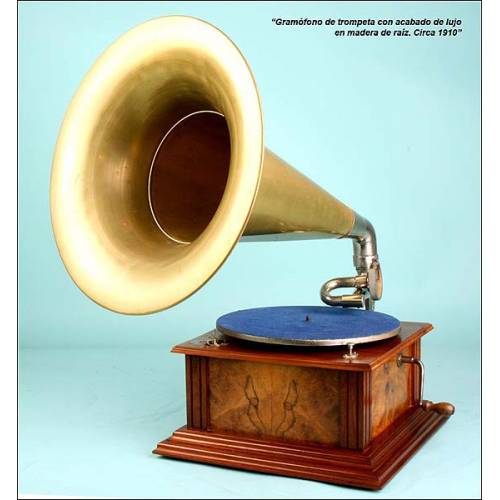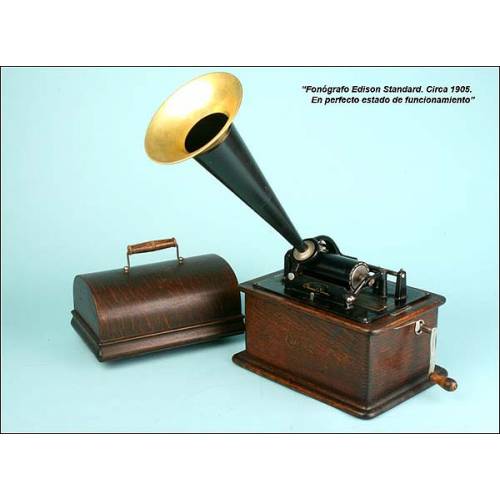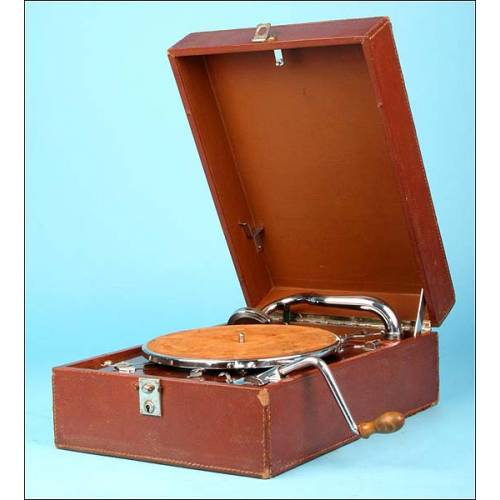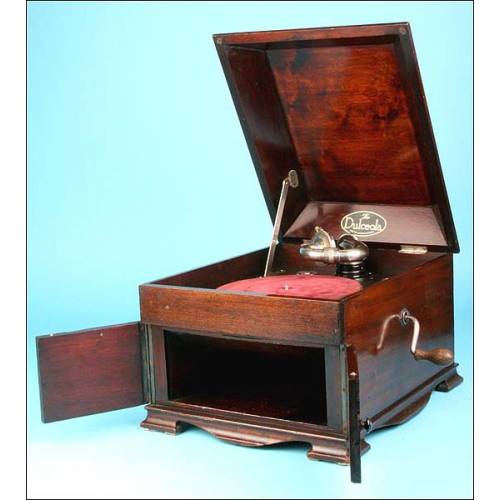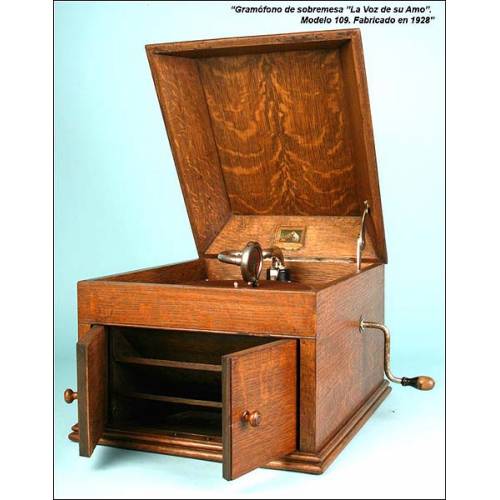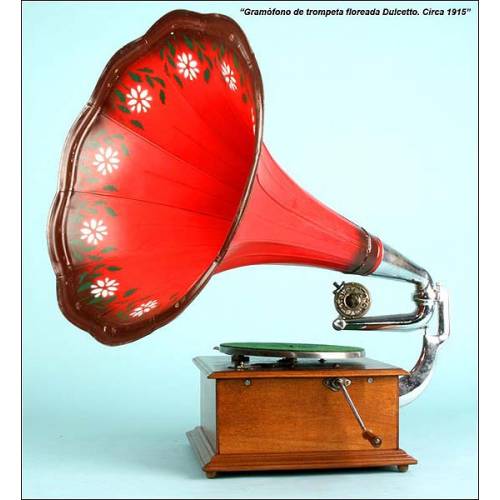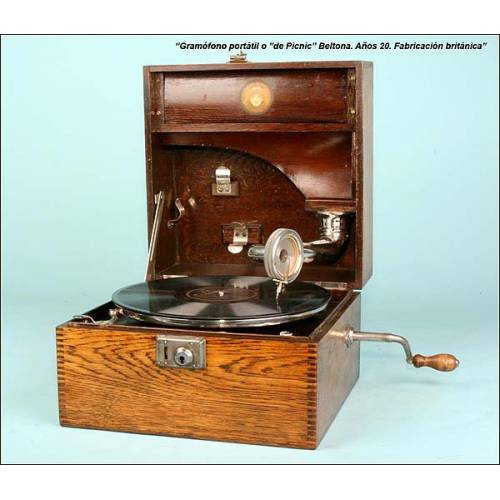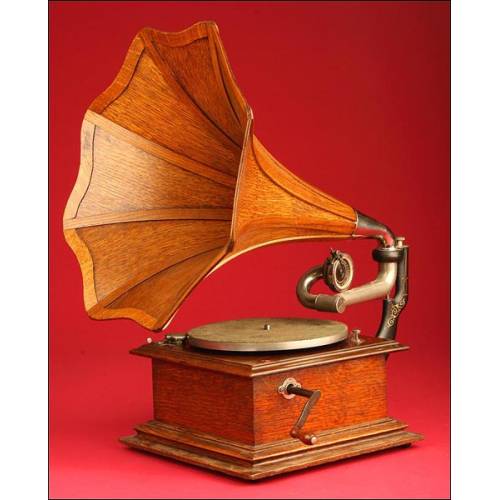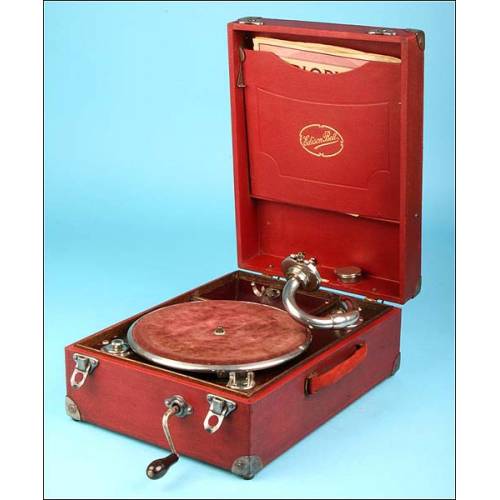B-573
Antique Odeonette mantel gramophone in working order. Germany, Circa 1925
Charming antique table gramophone Odeonette model. Very well preserved and in working order.
Sold!
This delicate and antique table gramophone is an Odeonette model made by Odeon record company circa 1925. The device shows off a sober and simple design that combines a beautiful solid wooden box with a great working order. The original motor was changed long time ago; the current one has been fully cleaned and fine-tuned in order to guarantee a high-quality sound. The gramophone boasts an attractive and elegant design, being the perfect piece to decorate a living room with a special touch. The name Odeonette was chosen by the Odeon label to design their smaller-sized gramophone and record series. We can see the Odeon logo (a classic-style temple) at the front side of the wooden box, just beside the speaker. The logo is crossed by the word Odeonette in red lettering. The box is made of solid oak wood, with a fine light golden-brown color and preserving the original finish. Its design shows off a great simplicity, a display of straight lines with no moldings or engravings. At the front of the gramophone we can see two small doors that make it possible to regulate the sound volume by opening or closing them. The silvery-metal pieces and component parts are original too and remain in good condition. The antique charm of this Odeonette gramophone is perfect to embellish the most romantic and stylish dining room. Measurements: Width: 14.9 in / 38 cm. Height: 11.8 in / 30 cm. Depth: 14.9 in / 38 cm.History of Odeon gramophone company Odeon emerged in 1904 as the registered trademark of the International Talking Machine GmbH, 24 Lehderstrasse, Berlin. The company was founded by Max Strauss and Heinrich Zunz with financial backing from Frederick M. Prescott. Essentially, like all early companies, it existed to sell talking machines (Gramophones) into the domestic market. For most early companies, the manufacture of records themselves was not the first consideration, but it was found necessary in order to increase the sale of machines. In 1904 Odeon launched the first double-sided gramophone records. In 1909 it created the first recording of a large orchestral work and what may have been the first record album when it released a 4-disk set of Tchaikovsky's Nutcracker Suite with Hermann Finck conducting the London Palace Orchestra. That same year Odeon became a part of the Carl Lindström Company, which also owned Parlophone ,Fonotipia and other labels. The Lindström company was acquired by the English Columbia Graphophone Company in 1926. In 1931 Columbia merged with Electrola, HMV and other labels to form EMI.

